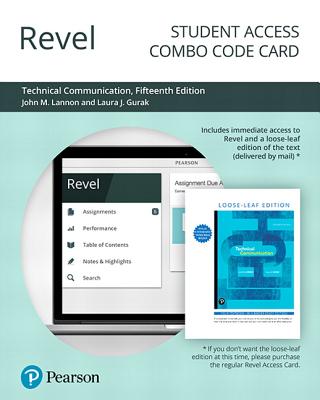買這商品的人也買了...
-
 Visual C++ 6 教學手冊 (Beginning Visual C++ 6)
Visual C++ 6 教學手冊 (Beginning Visual C++ 6)$580$458 -
 Matlab 程式設計與應用
Matlab 程式設計與應用$600$540 -
 Data Mining: Concepts and Techniques
Data Mining: Concepts and Techniques$2,520$2,394 -
 精通 ASP 資料庫程式設計
精通 ASP 資料庫程式設計$599$473 -
 Excel 2002 入門與在財務金融的應用
Excel 2002 入門與在財務金融的應用$520$411 -
 LPI Linux 資格檢定 (LPI Linux Certification in a Nutshell)
LPI Linux 資格檢定 (LPI Linux Certification in a Nutshell)$880$695 -
 ASP.NET 網頁製作徹底研究
ASP.NET 網頁製作徹底研究$650$553 -
 作業系統概念 (Operating System Concepts, 6/e Windows XP Update)
作業系統概念 (Operating System Concepts, 6/e Windows XP Update)$780$741 -
 ASP.NET 程式設計徹底研究
ASP.NET 程式設計徹底研究$590$466 -
 PHP 網頁設計範例教本
PHP 網頁設計範例教本$580$493 -
 鳥哥的 Linux 私房菜-伺服器架設篇
鳥哥的 Linux 私房菜-伺服器架設篇$750$638 -
 鳥哥的 Linux 私房菜─基礎學習篇增訂版
鳥哥的 Linux 私房菜─基礎學習篇增訂版$560$476 -
 CCNA Self-Study: Interconnecting Cisco Network Devices (ICND) 640-811, 640-801, 2/e
CCNA Self-Study: Interconnecting Cisco Network Devices (ICND) 640-811, 640-801, 2/e$2,260$2,147 -
 人月神話:軟體專案管理之道 (20 週年紀念版)(The Mythical Man-Month: Essays on Software Engineering, Anniversary Edition, 2/e)
人月神話:軟體專案管理之道 (20 週年紀念版)(The Mythical Man-Month: Essays on Software Engineering, Anniversary Edition, 2/e)$480$379 -
 JSP 與 Servlet 500 個應用範例技巧大全集
JSP 與 Servlet 500 個應用範例技巧大全集$590$460 -
 最新 JavaScript 完整語法參考辭典 第三版
最新 JavaScript 完整語法參考辭典 第三版$490$382 -
 Eclipse 整合開發工具 (Eclipse)
Eclipse 整合開發工具 (Eclipse)$540$427 -
 Elements of Engineering Probability and Statistics(平裝)
Elements of Engineering Probability and Statistics(平裝)$600$588 -
 Windows Server 2003 完全探索
Windows Server 2003 完全探索$650$553 -
 $2,185Design Patterns Explained: A New Perspective on Object-Oriented Design, 2/e (Paperback)
$2,185Design Patterns Explained: A New Perspective on Object-Oriented Design, 2/e (Paperback) -
 PHP 網頁模組隨學隨用
PHP 網頁模組隨學隨用$480$408 -
 ASP.NET 徹底研究進階技巧─高階技巧與控制項實作
ASP.NET 徹底研究進階技巧─高階技巧與控制項實作$650$507 -
 CSS 網頁設計師手札 (The CSS Anthology 101 Essential Tips, Tricks & Hacks)
CSS 網頁設計師手札 (The CSS Anthology 101 Essential Tips, Tricks & Hacks)$450$383 -
 軟體測試理論與實作
軟體測試理論與實作$520$406 -
 Oracle 10g 資料庫管理實務
Oracle 10g 資料庫管理實務$680$578
相關主題
商品描述
Description:
This guide covers the basics of scientific and engineering communication, including defining an audience, working with collaborators, searching the literature, organizing and drafting documents, developing graphics, and documenting sources. The documents covered include memos, letters, proposals, progress reports, other types of reports, journal articles, oral presentations, instructions, and CVs and resumes. Throughout, the authors provide realistic examples from actual documents and situations. The materials, drawn from the authors’ experience teaching scientific and technical communication, bridge the gap between the university novice and the seasoned professional.
In the five years since the first edition was published, communication practices have been transformed by computer technology. Today, most correspondence is transmitted electronically, proposals are submitted online, reports are distributed to clients through intranets, journal articles are written for electronic transmission, and conference presentations are posted on the Web. Every chapter of the book reflects these changes. The second edition also includes a compact Handbook of Style and Usage that provides guidelines for sentence and paragraph structure, punctuation, and usage and presents many examples of strategies for improved style.
James G. Paradis is Professor and Head of the Program in Writing and Humanistic Studies at the Massachusetts Institute of Technology.
Muriel L. Zimmerman is Senior Lecturer and Coordinator of the Programs in Technical Communication in the Writing Program at the University of California, Santa Barbara.
Table of Contents:
Part I 1. Writing and Work 2. Collaborative Writing 3. Your Audience and Aims 4. Organizing and Drafting Documents 5. Revising for Organization and Style 6. Developing Graphics 7. Design of Page and Screen 8. Searching the Literature 9. Documenting Sources Part II 10. Memos, Letters, and Electronic Mail 11. Proposals 12. Progress Reports 13. Reports 14. Journal Articles 15. Oral Presentations 16. Instructions, Procedures, and Computer Documentation 17. Electronic Doumentation 18. CVs, Resumes, and Job Correspondence A Brief Handbook of Style and Usage
商品描述(中文翻譯)
**描述:**
本指南涵蓋科學與工程溝通的基本知識,包括定義受眾、與合作者合作、搜尋文獻、組織與撰寫文件、開發圖形以及記錄來源。所涵蓋的文件包括備忘錄、信件、提案、進度報告、其他類型的報告、期刊文章、口頭報告、說明書以及履歷和簡歷。全書中,作者提供了來自實際文件和情境的真實範例。這些材料源自作者在教學科學與技術溝通方面的經驗,彌補了大學新手與資深專業人士之間的差距。
自第一版出版以來的五年中,溝通實踐已被計算機技術所改變。如今,大多數通信都是以電子方式傳送,提案在線提交,報告通過內部網絡分發給客戶,期刊文章則為電子傳輸而撰寫,會議報告也會在網上發布。本書的每一章都反映了這些變化。第二版還包括一本簡明的風格與用法手冊,提供句子和段落結構、標點符號及用法的指導,並展示了許多改善風格的策略範例。
James G. Paradis 是麻省理工學院寫作與人文研究計畫的教授及負責人。
Muriel L. Zimmerman 是加州大學聖塔巴巴拉分校寫作計畫中技術溝通課程的高級講師及協調員。
**目錄:**
**第一部分**
1. 寫作與工作
2. 協作寫作
3. 你的受眾與目標
4. 文件的組織與草擬
5. 針對組織與風格的修訂
6. 圖形的開發
7. 頁面與螢幕的設計
8. 文獻搜尋
9. 來源的記錄
**第二部分**
10. 備忘錄、信件與電子郵件
11. 提案
12. 進度報告
13. 報告
14. 期刊文章
15. 口頭報告
16. 說明書、程序與計算機文檔
17. 電子文檔
18. 履歷、簡歷與求職通信
19. 簡明的風格與用法手冊











